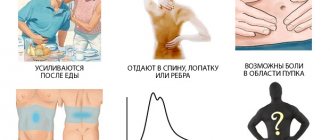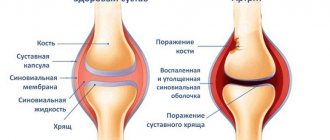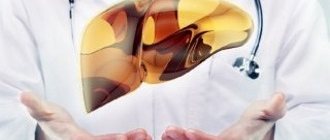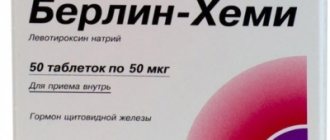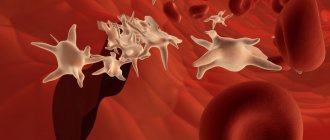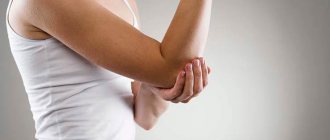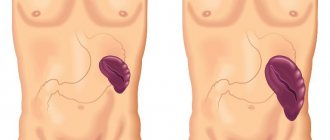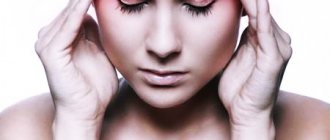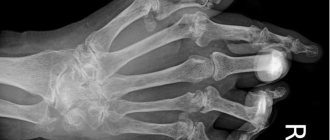Foot injuries
A pronounced pain syndrome occurs with mechanical damage to the fingers or the entire foot.
The most common types of injuries:
- burn of the lower limb;
- frostbite of fingers;
- phalangeal fractures;
- dislocations of the foot joints with pain radiating to the fingers;
- sprains and ligament tears;
- cuts;
- bruises;
- damage from wearing uncomfortable shoes.
In the clinical picture of all mechanical injuries, pain in the toes is the leading symptom. However, there is also redness of individual phalanges or the entire foot, swelling, which depends on the type of damage and its extent. With open injuries, there may be hemorrhages, and the presence of hematomas is also characteristic . As for burns and frostbite, the worse the situation, the less severe the pain will be.
In the fourth stage, when the nerve endings die, the sensitivity of the fingers disappears completely. Treatment for traumatic toe injuries depends entirely on the type of injury. In most cases, a fixing bandage is applied, and the load on the leg is removed as much as possible. Analgesics, anti-inflammatory and sometimes decongestants are used. To prevent inflammatory processes, open wounds are disinfected. If soil gets into the wound, then tetanus prophylaxis is carried out according to indications.
Diabetic angiopathy
This term refers to a group of diseases that affect blood vessels. As a result of metabolic disorders in diabetes, the walls of blood vessels thicken and their permeability increases, which leads to poor circulation. Various organs and systems can be affected - eyes, kidneys, heart, brain and lower limbs.
When the blood vessels in the legs are damaged, tingling and numbness first occurs in the calves, feet and fingers due to a lack of blood supply and damage to the nerve endings. The feeling of cold and crawling is caused by insufficient blood circulation and is especially pronounced after physical activity.
The next pain syndrome appears when the vascular lumen narrows significantly and blood flow slows down. The pain occurs suddenly, usually while walking, and forces the person to stop. This symptom is called intermittent claudication, accompanied by a feeling of tension and heaviness in the legs. It is typical that after a short break the pain goes away.
In addition to changes in gait, pallor of the skin of the lower extremities is observed. Due to prolonged disruption of tissue nutrition, the pads and fingertips turn blue, hair falls out, and the growth of nail plates slows down. Nails become brittle and thicken.
In the later stages of diabetes, trophic ulcers appear in the foot area, which do not heal for a long time and often become infected. The development of diabetic foot is accompanied not only by damage to the skin and soft tissues, but also by pathological changes in bones and joints.
Reference: diabetic macroangiopathy affects mainly large arteries and is relatively rare. In 30% of cases, the arteries of the heart are affected, the lower extremities account for the remaining 70%.
Treatment
To get rid of pain, you need to monitor your blood glucose levels and take angioprotective drugs. They are designed to dilate blood vessels, improve blood circulation, strengthen the endothelium and eliminate inflammation in the vascular wall. For angiopathy of the lower extremities, medications such as Venoruton and Trental are effective.
Ascorbic acid, vitamin C, has a strong antioxidant effect. It is administered intramuscularly or intravenously daily, 1 ml. Ascorbic acid significantly increases the absorption of glucose by the body, which leads to a decrease in its concentration in the blood.
To stimulate metabolic processes in nerve cells, Pyridoxine - vitamin B 6 - is prescribed. Intramuscular injections of vitamin E - Tocopherol - help prevent oxygen deficiency in the blood.
The main factor contributing to the development of angiopathy is poor treatment of diabetes mellitus
To normalize blood sugar levels, doctors prescribe Glycon, Siofor, Reklid, Diabeton, Diastabol and Amaryl. During treatment, the patient must undergo regular blood and urine tests and follow a special diet for diabetics.
Herbal-based folk remedies also have a good effect. They have restorative, hypoglycemic, immunomodulatory and other beneficial properties. You can prepare infusions and decoctions from herbs, but the easiest way is to brew regular tea. Chamomile, sage, blueberry and linden leaves, as well as lilac leaves in summer, and buds and flowers in spring, are suitable for a healing drink.
Gout
Gout is a genetically determined disease with metabolic disorders. It is characterized by an enzymatic deficiency in the breakdown of purine compounds, due to which uric acid accumulates in the human body.
With this disease, the toes hurt due to the accumulation of salts of this acid in the joint capsules.
Most often the big toe is affected, but gradually the disease spreads or migrates to other parts of the body , affecting mainly the small joints of the phalanges. Gout develops in people with a congenital genetic defect, but it is provoked by the influence of predisposing factors. These include:
- consumption of large quantities of smoked products;
- the predominance of proteins in food (especially red meat);
- excess weight;
- inactive lifestyle;
- alcohol abuse;
- smoking;
- incorrect diet.
The disease is characterized by a chronic course with pronounced relapses. There is no clinical picture during the period of remission, and the disease can only be confirmed by laboratory tests. A bulge in the area of the finger joint can be visually detected. When your toe hurts, a gouty crisis begins. The pain syndrome is so intense that patients call it unbearable. The area around the joint becomes swollen and red with increased local temperature . Gradually, the pain goes away on its own and completely disappears until the next attack. A complete cure for gout is still elusive. However, quite effective methods have been developed to keep the pathology under control, reducing the number of relapses.
The basis of treatment is diet therapy with complete elimination of risk factors.
Groups of anti-inflammatory drugs are also used, but injections of the missing enzyme are considered the most effective. Thus, protein metabolism is quickly restored.
Other measures and means
Later we will take a closer look at the use of traditional methods. For now, let's clarify: most of them should reduce joint pain.
- Bandaging the source of pain with a piece of fabric made of natural wool or wearing flaps of sheep wool on the joint.
- Rubbing the affected joint with melted lard.
- Using products based on larkspur and marsh cinquefoil. Pharmacies sell ready-made ointments containing these substances.
- Grinding with mixtures of lilac tincture (to prepare a large glass of flowers you need to pour a bottle of vodka and then leave for several weeks).
- Apply compresses on grated horseradish.
- The use of rubbing with Kalanchoe tincture.
All this is just an addition, that is, against the background of professional treatment, these methods are of a secondary nature. It is necessary to treat the disease that caused the joint pain.
As a rule, the first actions of a doctor in the case of such an illness are the same. Joint diseases require pain relief and a strict diet. The next step is accurate diagnosis and prescription of drug treatment. The emphasis on the knowledge of healer grandmothers is completely contraindicated. Only through the joint efforts of the patient and the doctor can the normal functionality of the legs be restored. Sometimes the advice that a patient receives from his contemporaries is terrifying - if it is advice from the category of pseudo-medicine or the same folk remedies.
Professional treatment is based primarily on diet. When gout is diagnosed, you have to say goodbye to your uric acid levels. It must be lowered, and for this purpose medications are prescribed that enhance the process of salt removal. In the case of arthritis, depending on its type, immunostimulants and anti-inflammatory drugs are indicated. It is possible to take immunosuppressants and antibiotics.
If osteoarthritis is present, it is necessary to take non-steroidal anti-inflammatory drugs. This category of products consists not only of ointments, but also injections. Some physical therapy is required.
Diagnosis can only be made by a specialist. There are a large number of traditional medicines, which we will return to later. They are also prescribed by a specialist. This is a serious illness that can only be cured most effectively by a doctor.
It is imperative to take into account such a factor as flat feet. This is a disease with an unpredictable course, when a person is not always able to predict how he will feel tomorrow.
In case of flat feet, you need to resort to simple methods of help:
- Use of special orthopedic insoles.
- Avoid tight shoes.
- Refusal of high heels.
The leg should not feel any discomfort. The load should be distributed completely on the foot. Then your step will become much more cheerful, and your health will improve.
With arthritis, the patient suffers from movement and limited mobility of the joint. He often has a feeling of stiffness when his night's rest time passes. The skin above the joint acquires signs of swelling, it turns red, and the temperature may rise.
A disease such as arthritis is a manifestation of joint inflammation. It can be spicy. In this case, severe pain and swelling are diagnosed. Their form can also be chronic. The course of the disease seems to be slow. The second form has such dangers as neglect, although it has more pronounced symptoms. With prolonged inflammation, the joint becomes deformed and begins to collapse.
Most often, a disease such as arthritis is a consequence of infection. It, in turn, enters the body through the blood and from other organs.
Treatment, in this case, should be aimed at eliminating the infection. As you know, antibacterial drugs fight this. Anti-inflammatory drugs are prescribed at the same time. Their task is to relieve pain and lower temperature. When a joint becomes inflamed, the cartilage becomes unusable. Then you need to take a course of chondroprotectors. This is the name of medicines containing components that nourish this organ. Physiotherapy also gives good results - they can restore the functioning of damaged cartilage, as well as massage and therapeutic exercises.
Other symptoms often appear - with intense, sudden pain, when the site of the disease becomes red and inflamed, swelling. This symptom most often concerns the big toes. Over time, the duration of such attacks increases.
This means that the patient has gout. This is a joint disease. It is formed due to deposits of uric acid salts (urates). Gout causes discomfort in the hands and feet, especially the phalanges of the big toe. This disease appears due to metabolic disorders, as well as fatty foods, alcohol, and disproportionality in the metabolism of uric acid salts. Due to the latter fact, stones form in the kidneys.
In this case, special treatment is indicated. It is associated with taking medications that relieve inflammation and pain, improving the process of salts from the body. In surgery, they often resort to a method such as removing individual accumulations of salts that irritate the joint and nearby tissues. A special diet is prescribed with the exclusion of offal, legumes, fatty meats, and alcohol from the diet. You have to constantly take tests, which allows you to maintain the dosage of drugs that control its excretion.
With certain diseases, joints (especially the smallest ones) give certain symptoms. This is the already familiar morning stiffness and swelling. This set of symptoms indicates rheumatoid arthritis. This is an autoimmune disease that is caused by a malfunction of the immune system. It is preceded by a number of factors - a virus, an infection. When they occur, the body produces antibodies whose action is directed towards its own tissues. The most striking manifestations are associated with the joints. But the changes cover the work of the whole organism. Such diseases often appear due to hormonal changes. It is believed that rheumatoid arthritis occurs most often in adolescents and women during menopause. The immune system regularly finds itself at the stage of restructuring its adaptive capabilities, in particular in the autumn-spring period, and at this time the disease can worsen.
Treatment of such joint disease is associated with great difficulties. Its flow is successfully slowing down. At the same time, the patient needs to be treated by a rheumatologist with simultaneous observation throughout his life.
If the patient complains of pain that occurs during or after exercise, with decreased mobility and cracking of the joint, you should check to see if there is swelling or muscle tension. Similar symptoms appear with osteoarthritis. This is a process of changes in articular cartilage, in other words, its destruction. This is the reason the bones lose mobility. Characteristic pains appear. Among other joint diseases, arthrosis remains the most common. The knee and hip joints of patients over 50 years of age are most often at risk, but initial disorders appear already at 35-40. This is a rather complex disease. Osteoarthritis is usually associated with the aging of the body, and no one has yet been able to prevent this process.
To make the pain less severe, pain medications and a course of chondroprotectors are prescribed. In order to stabilize blood circulation and normalize metabolism, spa procedures are recommended.
Often the destruction of the joint is insurmountable. In this case, endoprosthetics is necessary - replacing the joint with an artificial one. This measure is an extreme measure, but it prolongs joint mobility for another 12–15 years.
Arthrosis
A factor close to gout, why toes hurt, is arthrosis. The disease is a degenerative process in the joint , which is characterized by its gradual destruction with the addition of inflammation. It is believed that the cause of the development of pathology is a violation of metabolic processes in the body, but there is no direct evidence of this theory. Therefore, in fact, arthrosis is considered a disease of unknown etiology. The clinical picture of the pathology is characterized by intense pain in the toes, which most often occurs at night and gradually subsides by morning. Swelling with redness and local hyperthermia forms around the affected joint.
During an attack, movement in the finger is limited, and lameness develops . The diagnosis can be confirmed after an X-ray examination. Depending on the severity of the pathological process, either one or all toes on the toe may be affected. A large number of methods for treating foot arthrosis have now been developed, but the doctor will be guided by the patient’s individual data when choosing. For therapy to be successful, you should consult a doctor at the first pain in your toes.
Degenerative processes in the joint capsule are irreversible, so late treatment guarantees permanent impairment of finger mobility.
Treatment of arthrosis is always complex using medications and physiotherapeutic procedures.
Diagnosis of finger pain
CELT specialists recommend seeking medical help if you experience even a slight feeling of numbness in your fingers. Along with pain, this is a reason to visit a rheumatologist or neurologist in our Pain Clinic, conduct diagnostic tests and treatment.
In order to correctly make a diagnosis, in addition to a clinical examination and history taking, other diagnostic tests are carried out:
- radiography;
- manual muscle testing;
- ultrasonography;
- Magnetic resonance imaging.
Arthritis
Inflammatory processes in the small joints of the phalanges of the fingers also lead to pain. Unlike arthrosis, arthritis is also characterized by the presence of general symptoms:
- low-grade fever;
- chills;
- often damage to the visual apparatus (conjunctivitis);
- weakness;
- sleep disturbance;
- weight loss in chronic pathology.
A characteristic feature of many chronic arthritis is irreversible joint deformation. The occurrence of the disease is associated with heredity, infectious lesions, post-traumatic complications and prolonged stress. The most common diseases include: rheumatism, rheumatoid arthritis, reactive inflammation, psoriasis. If you have pain in your toes, you should immediately rule out an inflammatory process, since many of the above diseases affect not only the joints of your toes, but also internal organs. After the diagnosis is established, treatment is prescribed, which consists of taking anti-inflammatory drugs of non-steroidal and hormonal origin. Analgesics and restorative therapy are also .
To ease the course of the disease, the doctor may prescribe some physiotherapeutic procedures.
Hammertoe deformity
With a hammertoe deformity, the second finger or little finger most often hurts; the middle and ring fingers are less susceptible to curvature. Under the influence of external and internal factors, the shape of the fingers changes and takes on the appearance of a hammer.
This pathology does not occur on its own, but is a consequence of flat feet and the valgus deformity described above. Increased risk factors include some systemic diseases:
- rheumatoid arthritis;
- psoriasis;
- diabetes;
- sclerosis;
- Amyotrophy Charcot Marie Tooth;
- cerebral paralysis.
In some cases, hammertoe deformity occurs after a foot injury. Curvature of the fingers occurs gradually, its immediate cause is the predominance of the strength of the flexor muscles over the traction of the extensor muscles. Because the flexor tendon pulls on the finger more, it remains in a forced flexion position.
While walking, and especially fast, the pressure on crooked fingers increases. Patients complain that their fingers ache and are painful to step on. It is almost impossible to stand on your toes, since the affected finger rests on the outer edge of the nail plate.
In addition, calluses and corns appear, which aggravate the unpleasant symptoms. With severe curvature, ulceration of the skin is common. If the hammertoe deformity is combined with valgus, the second toe may “lie” on top of the first, covering it on top. The pathology is often complicated by subluxation of the phalanges and the development of arthrosis.
Treatment
In the early stages, further deformation can be stopped using conservative methods. It is enough to switch to comfortable, soft shoes with a wide toe, use orthopedic inserts and do therapeutic exercises for the feet. In advanced cases, surgical intervention cannot be avoided, since contracture occurs due to the formation of scars between the tendons and the joint capsule. The finger can be returned to its normal position using arthrodesis or partial resection of the phalanx. Sometimes an additional osteotomy of the metatarsal bone is performed.
Reference: arthrodesis is a radical operation, after which the finger remains in a straight position and does not bend, since the interphalangeal joint is completely removed.
Purulent skin diseases
The causes of pain in the fingers can be purulent pathologies of the periungual fold (paronychia) and inflammation of the phalanx of the finger (felon). Both diseases are characterized by the penetration of a bacterial infection into the area of mechanical damage. The most common pathogens are staphylococcal and streptococcal flora. The pathologies are characterized by all the typical signs of the inflammatory process:
- redness of the finger;
- swelling;
- pain;
- suppuration;
- local and sometimes general increase in temperature;
- weakness;
- loss of appetite.
In the absence of timely treatment, both diseases gradually progress and turn into an abscess or phlegmon, in which the clinical manifestations worsen. The patient's intoxication increases, although the pain may, on the contrary, decrease. The only treatment for all types of purulent inflammation on the toes is surgical. To prevent relapse, antibacterial agents are prescribed . If necessary, detoxification therapy is carried out.
During the operation, under local or general anesthesia, the suppurating area is opened, sanitized, and then drained. In some cases, complete excision of the affected area within healthy tissue is required. After removal of the source of infection and adequate antibiotic therapy, the risk of relapse is very low. The only exceptions are weakened patients and patients with diabetes.
Found a mistake? Select it and press Ctrl + Enter
How to prevent the disease
Basic preventive measures help prevent swelling in the toes. You just need to take care of your body and try to avoid the possibility of injury. The key to good foot health will be personal hygiene, which should be present in every person's life on an ongoing basis.
Particular attention should be paid to the choice of comfortable, high-quality shoes, which should be made from natural materials, and also have a not very high heel and a comfortable sole. In addition, you can use special orthopedic shoes or insoles. If fungal or other diseases are detected, treatment should be started immediately.
You should also monitor your diet so that it is complete and includes all the necessary microelements obtained from foods. It is necessary to reduce the amount of salt consumed, as it prevents excess water from leaving the body, which causes edema. It is also better to abstain from drinking alcohol or reduce it to a minimum.
Swelling of the fingers is easy to treat and is often completely eliminated, but only if treatment was provided in a timely manner. By following basic rules, you can prevent the formation of edema and also maintain your health.
